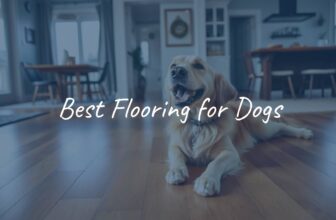
Bringing a dog into a home with children is exciting and full of promise. A good match can bring joy, companionship, and even help kids build social and healthy habits. Still, it’s a choice that calls for careful thought. The “best” dog for kids depends on your family’s space, routine, and your children’s ages and personalities. This guide looks closely at what makes a dog kid-friendly, key points to think about before you adopt, and breeds many families love for life with children.
What Makes a Dog Good for Kids?
When you picture a great dog for children, a few traits matter most. Cute is a bonus, but the dog’s nature and how it fits into busy family life matters more.
Traits to Look For in Family-Friendly Dogs
A family dog should be friendly and open with all members of the household. Patience and tolerance are very helpful, especially with younger kids who are still learning how to treat animals with care.
- Gentle, loving, and social with people
- Calm and steady in busy settings
- Patient and tolerant of noise and sudden movement
- Trainable and eager to learn
- Comfortable around other pets
A steady temperament matters a lot. Look for a dog that handles loud sounds, quick movements, and daily family bustle without stress. Breeds known for a calm attitude and flexibility tend to do well with kids.
Behavior and Temperament with Children
How a dog acts around children is often the most important point. Some breeds are better with toddlers; others do well with older kids who can follow rules about handling a dog. Very small dogs, like Maltese or Chihuahuas, can be fragile and nervous with rough play from toddlers. Very large dogs, like Mastiffs, can knock down small children without meaning to. A good family dog is gentle, sturdy, and careful with little ones. Guardian breeds like the Great Pyrenees can be wonderful with their own family’s children, but they may act pushy or protective around kids they don’t know.
Trainability and Patience
Dogs that learn quickly and want to please are easier in a family setting. You can teach them to greet gently, avoid jumping, and behave around kids. Patience helps on both sides. Kids are unpredictable, and a dog that can handle excited voices and quick movements without getting upset is a great fit. Breeds that respond to positive training and steady routines usually do well in a busy home.
Factors to Consider Before Choosing a Dog for Kids
Picking a family dog is more than falling for a cute face. Think about how the dog’s size, energy, coat care, and needs match your home and your family’s day-to-day life.
Size and Space Requirements
Size matters. Tiny dogs in a loud, active home may get stepped on or hurt by accident. Huge dogs in a small apartment may feel cramped and get restless. Many families find medium-sized dogs to be a good fit: sturdy enough for play, but not too big. If your kids are older and you have space, a larger, athletic dog can be great. Look at your home’s square footage, yard access, and how much outdoor time you can give.
Energy and Activity Level
Match the dog’s energy to your family’s routine. Hikers and runners may enjoy a high-energy breed like a Labrador Retriever or Irish Setter. If you prefer quiet evenings and short walks, a lower-energy breed like a Pug or Cavalier King Charles Spaniel may suit you better. Be honest about how much exercise time you can give. A bored dog that doesn’t get enough activity can become destructive or overly hyper.
Shedding and Grooming Needs
Coat care can affect daily life. Goldens and Bernese Mountain Dogs shed a lot and do best with regular brushing. Poodles shed very little but need professional grooming every few weeks. Think about how often you can brush, bathe, and book grooming visits. Kids may offer to help, but adults usually handle most of the work.
Allergies and Hypoallergenic Breeds
For families with allergies, this point comes first. No dog is 100% hypoallergenic, but some shed less and produce less dander. Poodles, Bichon Frises, and Portuguese Water Dogs are common picks. Spend time with a dog or breed before adopting to check for reactions.
Matching Breed to Your Family’s Lifestyle
The best dog for your kids is one that fits your home and routine. Do you live in a city apartment or a big suburban house? Are your kids toddlers or teens? Do you love outdoor trips or prefer quiet time inside? The answers help you narrow down choices. For example, Boston Terriers do well in apartments and like short walks and play. Beagles are cheerful, long-lived, and enjoy both family time and exercise.

Best Dog Breeds for Kids
Every dog is unique, but some breeds often show traits that work well with children. Here are several family favorites and what makes them shine in homes with kids.
Labrador Retriever
Labs are a longtime favorite for families. They are sturdy, energetic, and learn fast. Loyal and friendly, they usually do well with other pets and people. Most Labs love kids and enjoy fetch and trick training. They do best with plenty of exercise, so a big yard or lots of outdoor time helps keep them happy and out of trouble. Labs shed from moderate to heavy, so regular brushing is helpful.
Golden Retriever
Goldens are often seen as the classic family dog. They are a bit gentler than Labs, polite, easy to train, and kind with kids of all ages. They like to be part of daily family life and dislike being left alone too long. Their thick coats need daily brushing to prevent mats and deal with shedding. Goldens can face hip issues and some cancers, so regular vet care matters.
Beagle
Beagles weigh about 20-30 pounds and are a nice size for many homes. They are cheerful, loving, and playful with kids and tend to live long lives. Beagles are smart and love time with their people, including games and walks. They are small enough for toddlers to feel at ease yet active enough for older kids. Many Beagles are not safe off-leash because of strong scent instincts, and they can be vocal. Their short coats are easy, but they do shed, and the loose skin around the eyes needs to be kept clean.
Pug
Pugs are charming little dogs, around 15 pounds, great for apartments. They enjoy food, naps, and short bursts of play. A Pug will romp a bit, then curl up for a TV session with a child. Two short walks a day usually do the trick. Because of their short noses, they can have breathing issues and do poorly in heat. Clean their facial wrinkles often.
Boxer
Boxers are loyal, smart, loving, and very playful. Medium to large in size, they bring lots of energy and can be both fun playmates and watchful family dogs. They thrive with active families and enjoy sports like agility. They can be strong-willed and a bit much for very young kids, so closer supervision helps. Steady training and early social time with people and dogs are very important. Their short coats are easy, but face wrinkles need care.
Cavalier King Charles Spaniel
Cavaliers weigh 10-18 pounds and fit well in smaller homes. They are gentle, affectionate, and friendly with children and other dogs. They enjoy short daily walks and lots of cuddles. They are smart and like to please. Watch for heart and neurological issues by choosing responsible breeders and keeping up with vet visits.
Collie
Collies (40-75 pounds) are loyal, alert, and bright. They like to play, cuddle, and watch over children. They are easy to train and very people-focused. Some may gently “herd” their family by a soft nip, which kids learn to read quickly. Collies can become barky if ignored. Their dense coats shed heavily seasonally and need regular brushing, but they usually don’t need pro grooming.
Bernese Mountain Dog
Berners (80-110 pounds) are gentle giants. They are calm, patient, and very sweet with kids. They enjoy having a job and may even pull a small cart for fun. Supervision is wise around small children due to their size. They prefer cool weather and do poorly in heat. Their double coat sheds heavily, especially spring and fall, and needs frequent brushing and careful drying after baths.
Newfoundland
Newfoundlands (100-152 pounds) are often called “nanny dogs” because they are so kind and patient with children. They are calm for their size and can do well in apartments if they get enough family time. They dislike being left alone too much and may bark if lonely. Their thick coats shed a lot, and drool is part of life with a Newfie. Life span is shorter, about 8-10 years.
Boston Terrier
Boston Terriers (about 25 pounds or less) are people-focused, funny, and easy to live with. They adapt well to city life and are great with kids of many ages. They enjoy short walks and play sessions. Their “tuxedo” coat is simple to care for, and their size and moderate exercise needs fit many homes.
Bichon Frise
Bichons are happy, loving, and playful. They do well in apartments and smaller homes. They like daily play and walks but are not overly energetic. Their coats need routine brushing and trims, often by a groomer every 4-6 weeks. They shed very little, which can help families with allergies. Watch for skin and allergy issues.
Cocker Spaniel
Cocker Spaniels (around 25-30 pounds) are cheerful, gentle, and friendly. They get along well with kids and other pets and enjoy being part of family life. They like to please and take part in games and training. Their beautiful coats need steady grooming to avoid mats.
The Mutt or Mixed Breed Dogs
Mixed-breed dogs can make amazing family pets. Many combine great traits-gentle nature, loyalty, solid health-into one dog. Their varied genetics can lower the risk of some inherited problems. Temperament varies by the individual, so meet the dog and ask questions. Shelters are full of mixed-breed dogs who are ready for families. Staff can often share a “report card” describing a dog’s behavior and needs to help you find a good match.
Comparing Popular Family Dog Breeds
It helps to see how common family breeds differ in key areas. The breeds above all have strong points for homes with kids, but their size, energy, and care needs can guide your choice.
Temperament Differences
Goldens and Labs are friendly and love to please, with Goldens often a touch calmer. Beagles are upbeat and fun, but their nose can lead them to wander, so they need close watching. Pugs are couch buddies with short play bursts, while Boxers are athletic clowns who need plenty of activity. Newfoundlands and Berners are gentle giants with calm, patient natures. Collies are alert and protective, and Cavaliers are affectionate and easygoing across a range of activity levels. These small differences help you match a dog’s style to your family’s pace.
Size and Care Requirements
Family breeds range from small (Cavalier King Charles Spaniel 10-18 lbs; Boston Terrier under 25 lbs) to medium-large (Labrador 55-80 lbs; Golden 55-75 lbs) to giant (Bernese 80-110 lbs; Newfoundland 100-152 lbs). Smaller dogs fit apartments more easily, while bigger dogs usually need more space and outdoor time. Grooming varies too. Goldens and Newfoundlands have thick coats that call for daily brushing due to heavy shedding. Labs shed a moderate amount. Poodles and Bichons need pro grooming but shed very little, which can help allergy-prone families. Pugs and Boxers have short coats that are simple, but their face wrinkles need routine cleaning. These details matter as much as temperament over the long haul.
| Breed | Size | Energy | Coat care / Shedding |
|---|---|---|---|
| Labrador Retriever | 55-80 lbs | High | Moderate to heavy shed; regular brushing |
| Golden Retriever | 55-75 lbs | Medium to high | Heavy shed; daily brushing |
| Beagle | 20-30 lbs | Medium | Short coat; frequent shed |
| Pug | ~15 lbs | Low to medium | Short coat; wrinkle care needed |
| Boxer | 50-80 lbs | High | Short coat; wrinkle care needed |
| Cavalier King Charles Spaniel | 10-18 lbs | Low to medium | Regular brushing; light to moderate shed |
| Bernese Mountain Dog | 80-110 lbs | Medium | Heavy shed; frequent brushing |
| Newfoundland | 100-152 lbs | Low to medium | Heavy shed; frequent brushing; drool |
Adaptability to Children of Different Ages
Some breeds do well with kids of any age, while others fit certain age groups better. Irish Setters are gentle and sensitive for babies and young children and have the energy to keep up with older kids. Bulldogs are steady and calm, making them a safe choice for little ones. Beagles are small enough for toddlers and lively enough for older kids. Boxers, due to strength and enthusiasm, may need closer watching with very young children and often fit best with school-age kids and teens. Matching a breed’s play style to your children’s ages helps keep life smooth for everyone.
Choosing the Right Dog for Your Family’s Needs
Finding the right dog takes honest self-checks and some homework. Looks matter less than making a good fit for your home and routine so everyone does well together.
Questions to Ask Before Deciding
- How active are we? Do we want a high-energy dog for hikes or a calmer dog for short walks and couch time?
- How much time can we give daily to training, exercise, and grooming?
- What is our living space like? Do we have a yard or an apartment?
- Does anyone in the family have allergies?
- How old are the kids, and how do they act around animals?
Clear answers help you avoid a poor match and set up a happy home.
Resources for Learning More about Breeds
The American Kennel Club (AKC) offers trusted breed, health, and training info. Their site has detailed breed profiles with traits and care needs. Local shelters are also valuable, especially for mixed breeds. Staff often know each dog’s behavior and can share how a dog does with kids and other pets. Dog shows and breed meet-ups let you see real dogs and talk with owners. Don’t rely only on photos-watching a dog’s size, energy, and behavior in person teaches you a lot. Breed traits are a guide, but each dog is an individual, so spend time with the dog before you decide.
How to Prepare Your Family and Home for a New Dog
Bringing a new dog home is exciting, and a little planning makes the first days easier for both the dog and your family. A ready home and clear roles help everyone start well.
Introducing Dogs and Children Safely
Safety comes first. Even calm, gentle dogs need slow and respectful introductions. Teach kids to pet softly, give the dog space during meals and sleep, and never pull tails or ears. Always supervise time between dogs and children at the start. Create a “safe spot” for the dog to rest, and make that area off-limits to kids. Let the dog come to the children on its own. Praise calm behavior from both the dog and the kids to build trust.

Setting Household Rules and Training
Set clear rules before the dog arrives: where the dog sleeps, eats, and goes potty; who feeds and walks; and what the training plan looks like. Give children age-appropriate tasks so they can help. Consistent training is very important for any new dog and is a good way for kids to learn with adult help. Teach “sit,” “stay,” and “come,” which helps with manners and safety. Use rewards like treats and praise. Early social time with different people, sights, sounds, and friendly animals helps shape a steady family dog.
Creating a Safe, Enriching Environment
Make your home safe and welcoming. Dog-proof by removing toxic plants, choking hazards, and exposed cords. If you have a yard, keep fencing secure. Gather basics:
- Comfortable bed and crate or resting area
- Food and water bowls
- Leash, collar, and ID tags
- Chew toys and puzzle toys
- Brush and grooming tools
Enrichment means more than food and water. Use puzzle toys, daily play, and steady routines. Let kids help set up the dog’s area, pick toys, and choose a name so they feel involved and responsible. A dog that feels safe, engaged, and loved will settle in faster.
Frequently Asked Questions about Dogs for Kids
Families often have many questions before bringing home a dog. Here are common ones to help you pick well.
Should You Get a Puppy or an Adult Dog for Children?
Both can work. Puppies let you shape behavior early and get used to kids from the start, but they need lots of time, frequent potty breaks, and chew on everything. This can be hard if you have very young children. Adult dogs, often from shelters or rescues, may already be house-trained and past the chewing phase. Staff can share what they know about the dog’s behavior with children. While adult dogs need time to adjust, they can offer stable companionship right away. Pick based on the time and energy your family can give to training and daily care.
Can Small Breeds Be Good for Kids?
Yes. Many small breeds make great family pets if you choose the right match. Boston Terriers, Cavalier King Charles Spaniels, and Bichon Frises are good examples. They are loving, playful, and do well in smaller homes. The key is the dog’s temperament and your children’s behavior. Very tiny, fragile dogs may not be safe with rough toddlers, but small to medium dogs can be wonderful companions. Teach gentle handling and supervise play. With training and guidance, small breeds can be easy for kids to walk and care for.
What Are the Best Dogs for Kids with Allergies?
For allergy-prone families, picking lower-shedding breeds is a smart approach. No dog is fully hypoallergenic, but some shed a lot less and carry less dander into the home. Poodles (all sizes), Bichon Frises, and Portuguese Water Dogs are common choices. These breeds have hair that sheds less into the air and can trap dander. Spend time with the breed or the exact dog you plan to adopt to check for reactions. Regular grooming, including pro clipping and baths, can also help reduce allergens in your home.






